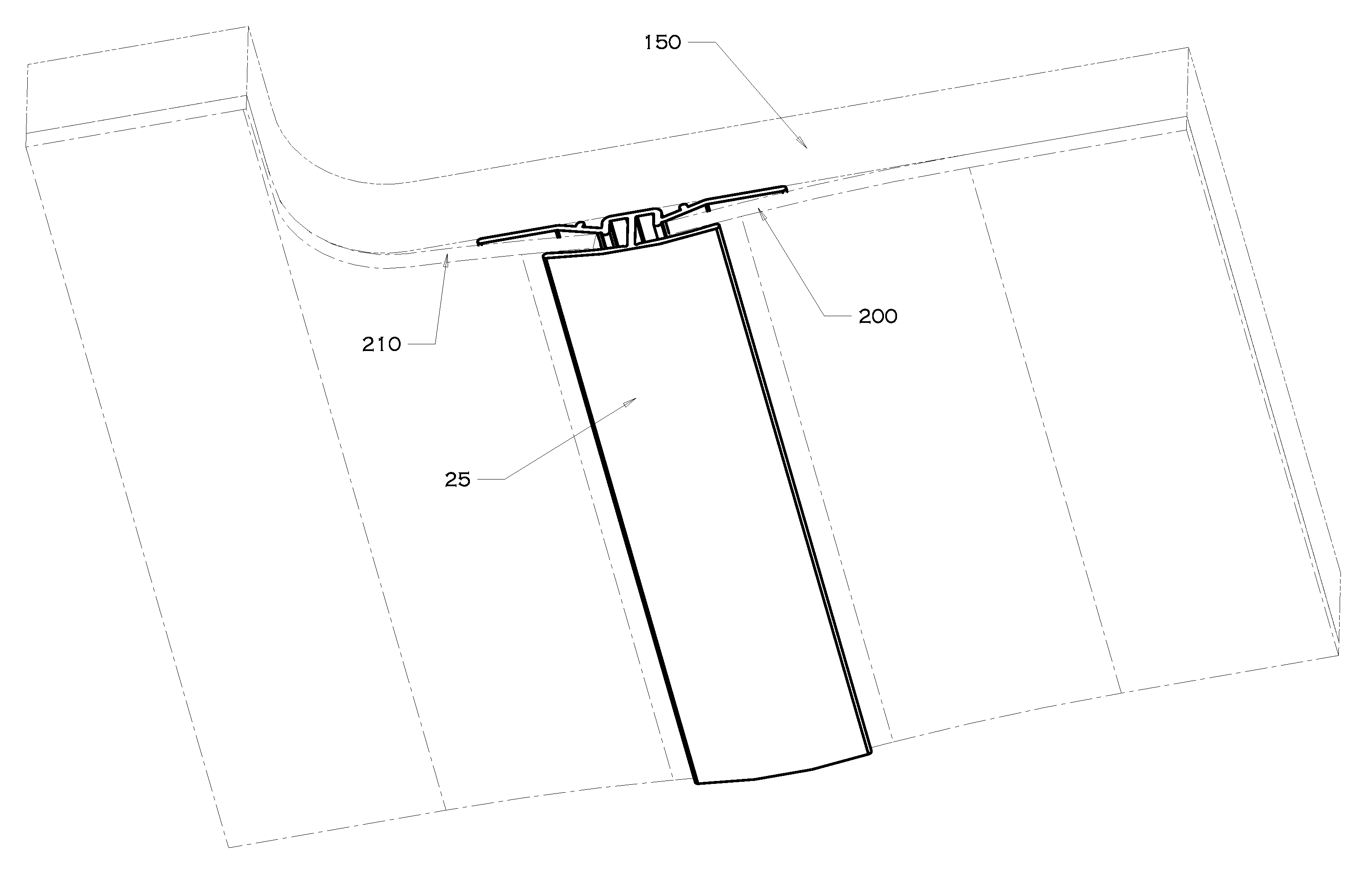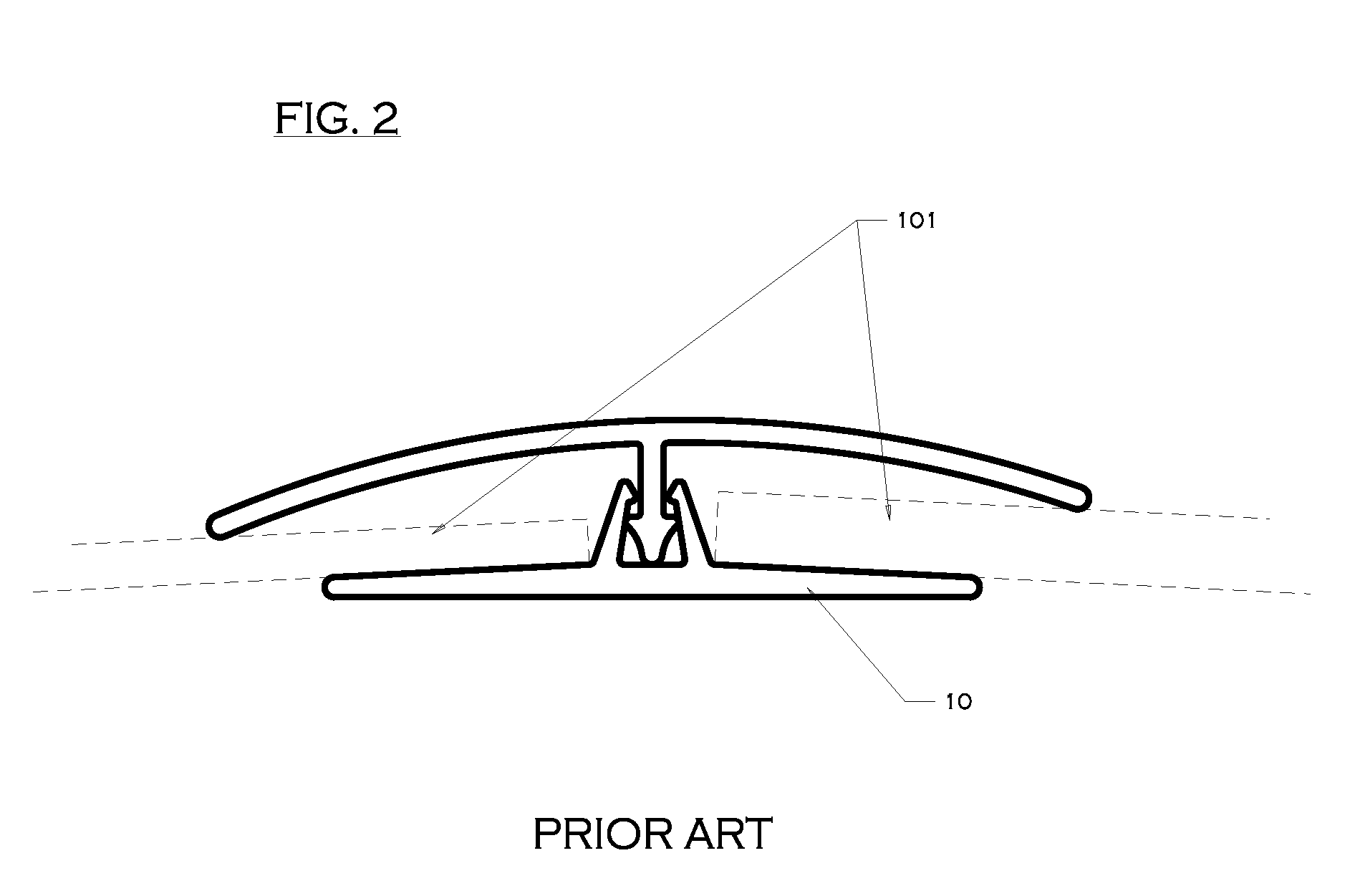Panel trim and related method of manufacture
a technology of panel trim and related methods, applied in the field of panel systems, can solve the problems of difficult wall attachment, visible gap or void between panels, increase cost, etc., and achieve the effect of reducing channel dimensions, simple and efficient, and easy installation
- Summary
- Abstract
- Description
- Claims
- Application Information
AI Technical Summary
Benefits of technology
Problems solved by technology
Method used
Image
Examples
Embodiment Construction
I. Overview and Definitions
[0032]A current embodiment of the panel trim of the present invention is shown in FIGS. 3-8 and generally designated 25. The trim 25 can be used to capture the ends of adjacent panels 200, 210, and conceal the gap 213 between them (FIG. 8). In general, the trim 25 can include a cover 30, a base 40, a flange 52, and one or more flex regions 70. The cover, flange and base cooperate to define generally opposing channels 66 and 68. The flex region 70 allows for independent flexing or movement of the cover 30 to facilitate insertion of a first panel 200 into the first channel 66 (FIGS. 5-6), while maintaining the size of the second channel 68 so that a second panel 210 can be easily inserted into the second channel 68 (FIGS. 7-8).
[0033]The following terms will have the definitions presented. As used herein, “panel” refers to any material that forms a surface, including but not limited to composite, plastic (natural or fiber), or wood sheets, rolls, webs, boards...
PUM
 Login to View More
Login to View More Abstract
Description
Claims
Application Information
 Login to View More
Login to View More - R&D
- Intellectual Property
- Life Sciences
- Materials
- Tech Scout
- Unparalleled Data Quality
- Higher Quality Content
- 60% Fewer Hallucinations
Browse by: Latest US Patents, China's latest patents, Technical Efficacy Thesaurus, Application Domain, Technology Topic, Popular Technical Reports.
© 2025 PatSnap. All rights reserved.Legal|Privacy policy|Modern Slavery Act Transparency Statement|Sitemap|About US| Contact US: help@patsnap.com



